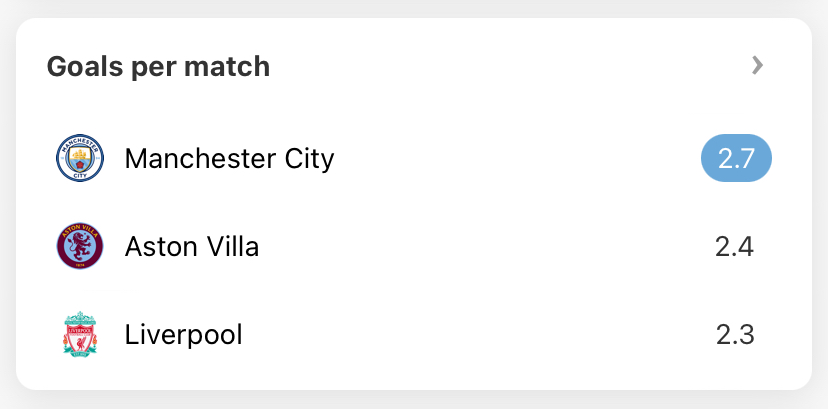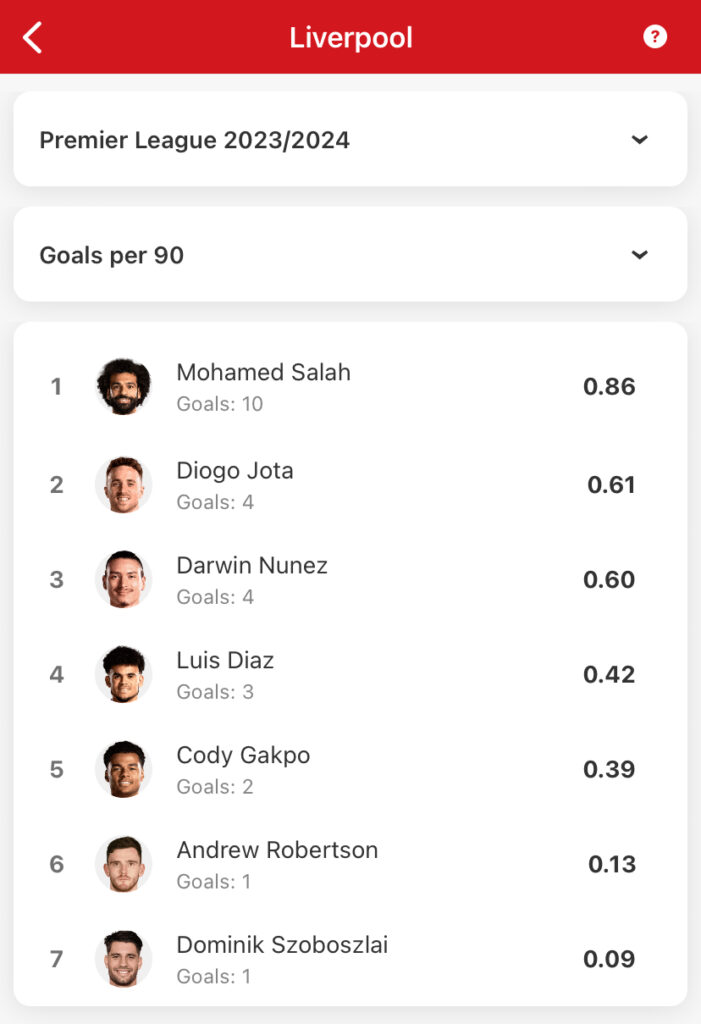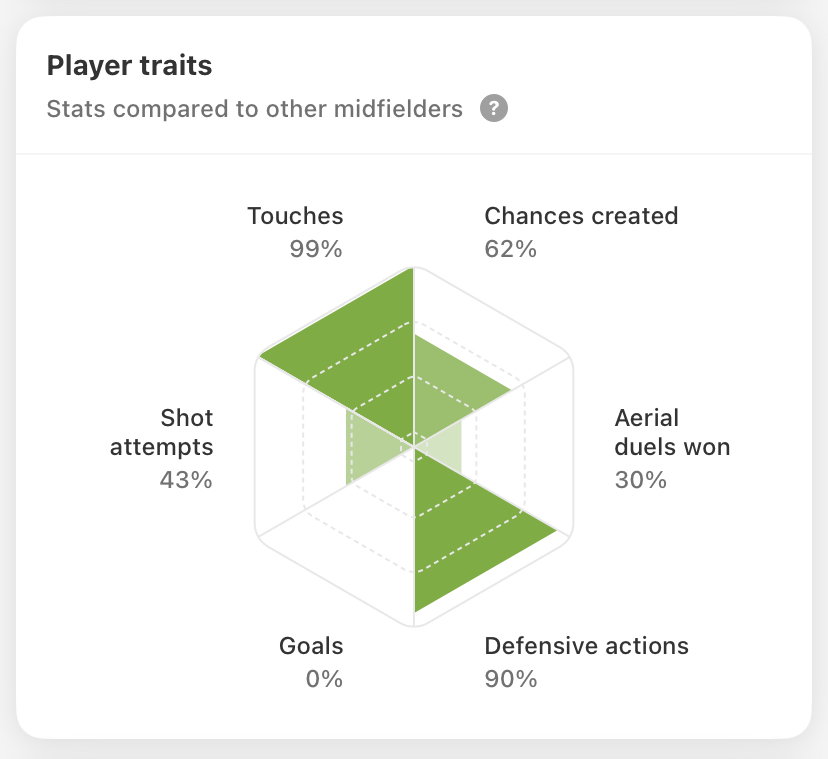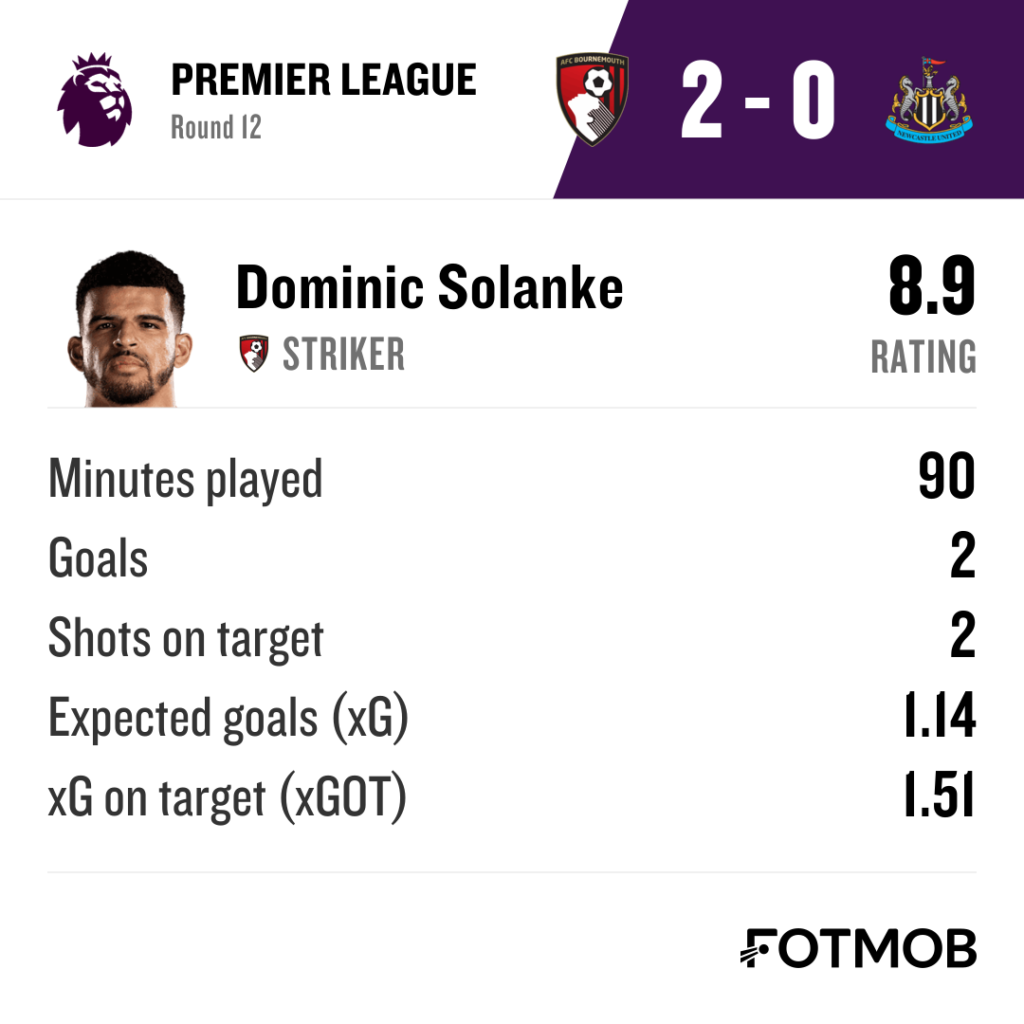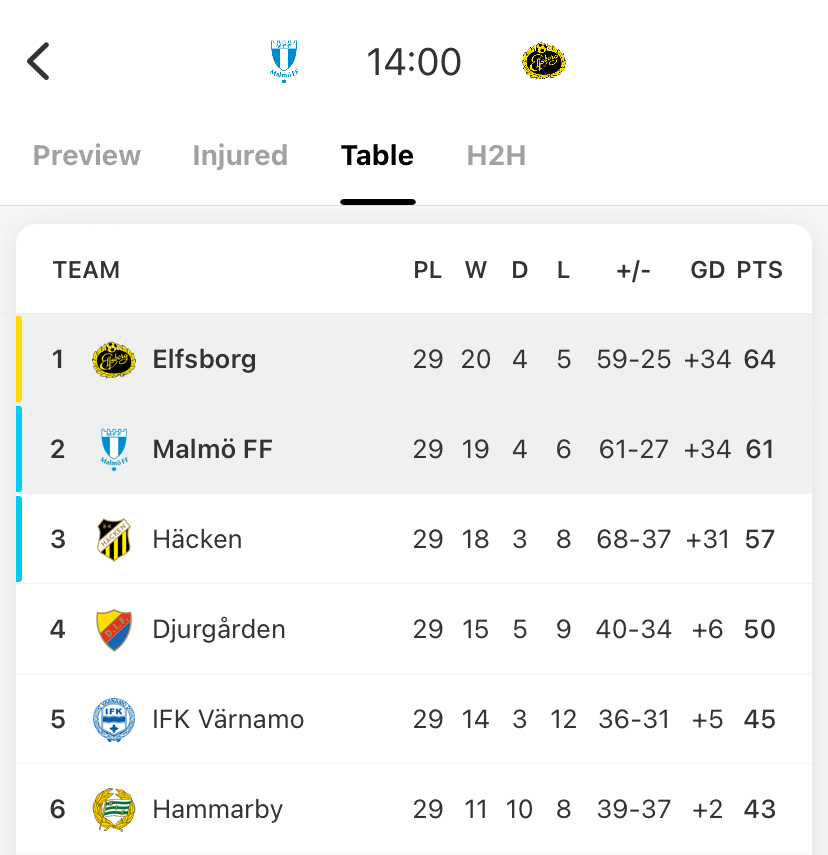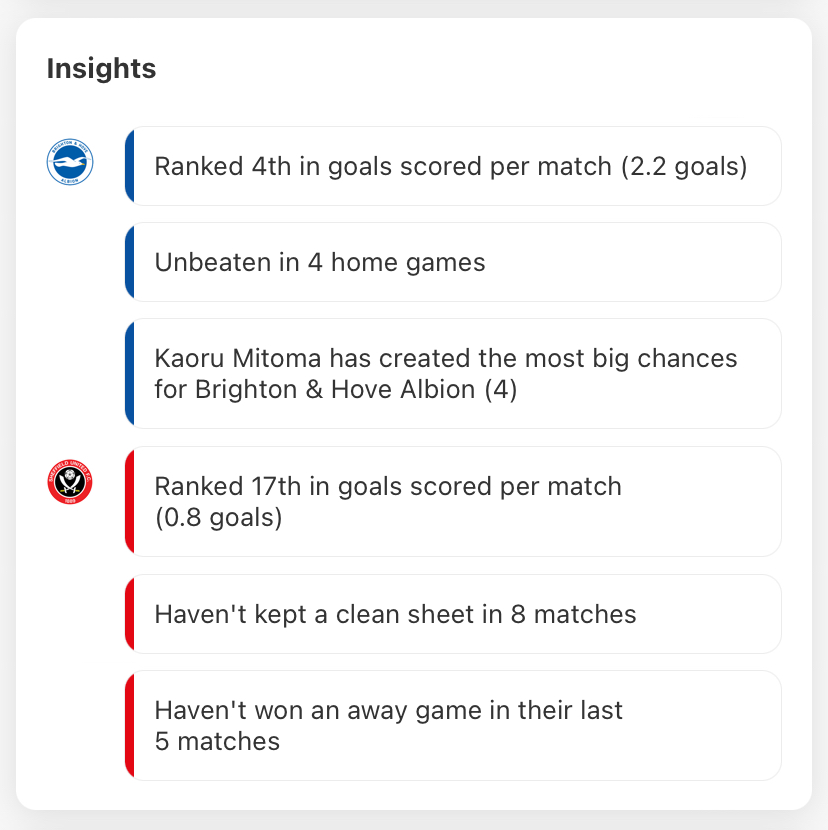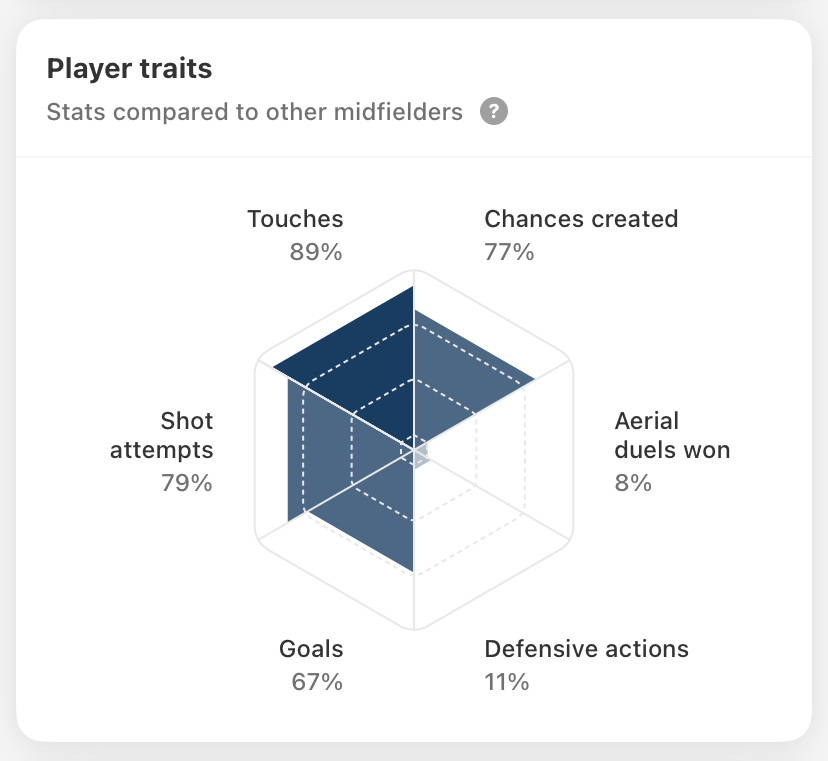In this weekend preview we summarise the best five games to follow on your match feed. And make a couple of suggestions for matches that you may otherwise miss.
🏴 Premier League: Manchester City vs. Liverpool
The powers that be have scheduled the biggest game of the Premier League season, to date, for the early kick-off slot on Saturday. Liverpool, who’ve struggled on the road (earning 9 points from a possible 18) but sit second in the table, go to leaders Manchester City, who’ve won all five of their home games so far, conceding just three goals in the process.

It’s a big fixture every year, with these two clubs sharing the last six titles (City 5, Liverpool 1) between them, but this one comes at a crucial time in the season. The narrative during the international break has been that supposed ‘injuries’ and withdrawals from various national team training camps will mean that Pep Guardiola’s side return to action virtually at full fitness. But also, some of Liverpool’s key performers have been on song for their countries, and come back to England in red hot form. Luis Díaz and Darwin Núñez were on fire in Colombia and Uruguay’s World Cup qualifiers, Mo Salah scored four in one game for Egypt, and Dominik Szoboszlai captained Hungary as they qualified for next year’s European Championships.
However, City can always boast of their recent dominance in this fixture. Liverpool have won just once at the Etihad since Jürgen Klopp’s appointment in 2015, and they’ve only ever been victorious in three league games since City moved to their new stadium back in 2003.
For a Liverpool take on the upcoming game, have a read of this guest column, from our friends at ThisIsAnfield – here.
🇮🇹 Serie A: Juventus vs. Inter
The weekend is bookended by another massive top of the table clash as the Derby d’Italia headlines the Serie A schedule on Sunday night. The eternal battle between Italy’s two most successful clubs – Juventus and Inter – comes at a time when they too occupy the top two places in the league. And that won’t change, regardless of earlier results elsewhere, thanks to the six point cushion that Juve, who sit second, currently have on the sides below them.
Inter’s record so far during this campaign has been phenomenal – W10 D1 L1 – and they’re also the top scorers (29 goals for) and have the meanest defence (six goals against). But Juve have only conceded seven so, as always, we’re expecting this to be a tight game. From their last six meetings, only the 2022 Coppa Italia Final (won by Inter) has produced more than two goals.
Ahead of the international break, Inter were on a nine game unbeaten run and had won their last six on the bounce (all comps). And their strike partnership of Lautaro Martínez and Marcus Thuram led both the Serie A goalscoring and assists charts respectively – Martínez with 12 goals, Thuram with five assists. For their part, Juve hadn’t lost in seven, and had won their last five league games, a run that included the Derby against Torino, and a win at Inter’s city rivals, Milan.
🇫🇷 Ligue 1: PSG vs. Monaco
Ahead of all those fixtures, Friday night brings us a treat from Ligue 1, where first face third in the French capital. Paris Saint-Germain clawed their way back to the top of the table ahead of the international break but now they must face one of the early season pacesetters that had been keeping them at bay in previous game weeks.
Monaco only lost one of their opening nine games and that came against in-form Nice. More recently, a defeat to LOSC, and a draw against newly promoted Le Havre have stalled their progress but they do remain the leagues’ second best goal scorers having outperformed their xG of 17.6 by netting 25 times.
As you’d imagine, PSG are the one team outscoring them, averaging 2.4 goals per game. Neither can boast a defence as tight as Nice though, who’ve conceded just four times in 12 games! Which is astounding.

PSG do have injury concerns coming back from the international break – captain Marquinhos will be missing along with teenage breakout star, Warren Zaire-Emery, who was injured during his goalscoring debut for France. However, they will be able to call on their talisman, and former Monaco striker, Kylian Mbappé. The Frenchman scored three and assisted three goals in the two games he played for the national team in the past week, to go with the 15 goals he’s already bagged for PSG this season.
🇩🇪 Bundesliga: Werder Bremen vs. Bayer Leverkusen
On Saturday, it’s time for the early season success story to get back to action in Germany. Bayer Leverkusen travel to 12th placed Werder Bremen looking to maintain their 17 game unbeaten start to the campaign (all comps).
Xabi Alonso’s side have won their last seven Bundesliga games and have only dropped points once so far – when they drew 2-2 at Bayern Munich. Werder Bremen can’t boast of any such success but they are unbeaten in their last three, and are perhaps showing some form after a dire start to the season that included a #Cupset against third tier opposition in the DFB Pokal and consecutive away defeats versus promoted teams where they conceded four goals in each.

Elsewhere, the league returns with Bayern’s game at FC Köln on Friday night. Besides the fact that the defending champions could move above Leverkusen with a win, the scheduling of the fixture has caused some consternation in German football circles. It’s the second time Bayern have played on a Friday following the international break and coach Thomas Tuchel was quoted as saying that the calendar is stretched to the “absolute limit” and that it was having a detrimental effect on his elite players.
🇪🇸 LaLiga: Cádiz vs. Real Madrid
In Spain, Real Madrid, like Bayern, have an opportunity to take top spot by virtue of playing their fixture before Girona, the current leaders of LaLiga. Madrid visit the southern port city of Cádiz, on Sunday, where the home side have been enduring a torrid campaign to date.
The Yellows have won just twice, and are ranked 20th out of 20 in terms of goals scored, averaging just 0.8 per match. That compares to Madrid’s 2.2 and if it wasn’t for the heroics of goalkeeper, Conan Ledesma, Cádiz would be a lot lower than their current 16th place in the table. The Argentine is averaging 4.2 saves per game, a rate only beaten by Villarreal’s Filip Jörgensen.
Carlo Ancelotti’s final season with Madrid (ahead of his move to take on the Brazilian national team in 2024) is going well. They’ve lost just once in their 17 competitive games, won at defending league champions Barcelona, beaten Girona, and have seen star summer signing Jude Bellingham race to the top of the goalscoring charts. A win at Cádiz would be their 11th league win and would see them go one point clear at the top of the table, at least temporarily.
Elsewhere, Barcelona play at Rayo Vallecano, on Saturday, and we’ll have to wait until Monday, to see how Girona respond to the weekend’s results.
Plus two hidden gems from a little deeper in your match feed…
🇺🇸 MLS Cup Play-offs: FC Cincinnati vs. Philadelphia Union
This week, we’ve chosen to highlight a couple of the Conference semi-finals as the MLS Cup play-offs head towards crunch time in the States.
And in the East, on Saturday night, we’re focusing on the battle between FC Cincinnati, who finished the regular season first in the Conference, and Philadelphia Union, who did the same in 2022. Philadelphia obviously didn’t reach such heights this season, finishing fourth, 14 points down on Cincinnati, who were also the surprise winners of the Supporters’ Shield, the prize given to the best performing side across the league as a whole.
In the play-offs, where that regular season form can go out the window, Cincinnati needed just two games to win their best-of-three series against wildcard entrants New York Red Bulls. And similarly, Philadelphia dispatched New England Revs in two. Unlike the previous round, these semi-finals are decided on the day, meaning Cincinnati’s home advantage could come in to play.
🇺🇸 MLS Cup Play-offs: Seattle Sounders vs. LAFC
On Sunday, in the West, we’ll see whether defending MLS Cup holders, LAFC can once again reach the Conference Final when they take on Seattle. The Sounders finished the regular season one point better off than the champions thanks to a late run of form that saw them lose just one of their final nine games. That contrasts with LA, who won only three times over the same period.
Both sides needed all three matches in the previous round of the play-offs – Seattle started with a win over FC Dallas, lost the second game away from home, then recovered with a 1-0 victory in game three. The first match between LAFC and their opponents, Vancouver Whitecaps, ended in a draw, with the Californians then going on to win 5-3 in game two, and then 1-0 in game three back in Canada.
If you want to follow any of the games mentioned above, click on the relevant link and tap the bell icon to receive all the key match updates.
Or join our new WhatsApp Channel for updates on all the important football going on this weekend!
Cover Image from IMAGO




